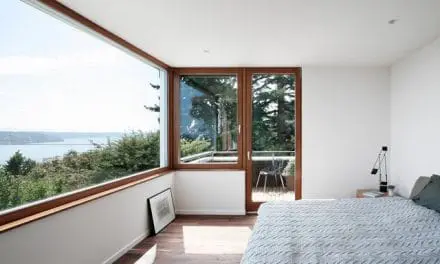Cape Cod, Mid-Century Modern, Dutch Colonial, Art Deco, Craftsman – there are so many different aesthetics to choose from when you’re building a home, there’s really something for everyone. But what if you want your home to be an eco-friendly abode? No worries. You can apply green building techniques and use green building materials for any style of home. Still, there are some styles/types of homes that you may want to consider integrating your aesthetic into to get more green into your dream home. So what are the different types of sustainable homes, you ask? Read on for 8 of the most popular styles of eco homes today, where they came from, and why you need one!
Tiny Homes
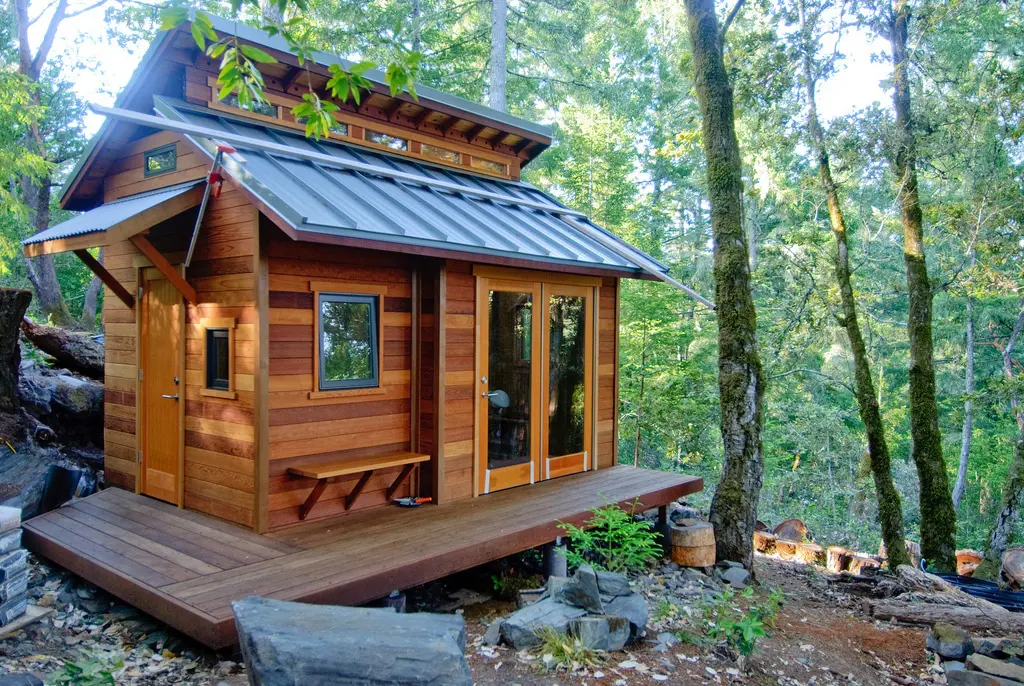
Photo Courtesy Ben Chun
The tiny house movement has become one of the more well known eco-home trends, and for good reason. They’re an economical, environmental solution to living simply. A tiny home is usually between 100 and 400 square feet, although some can be a bit larger or smaller. They can also be mobile little homes, fitting on a trailer and able to be moved to different locations. Tiny homes are designed to maximize the feeling of space by utilizing convertible furniture, lofts, and multi-use rooms.
Tiny living spaces have been around for centuries (igloos, wigwams, yurts, etc.), but it’s taken oversized mega-homes and a real estate crisis for many people to realize the benefits of scaling back. The concept of “less is more” is not so new, as seen in Sarah Susanka’s book “The Not So Big House” back in 1998, but it’s blowing up in a big way with the growing tiny house movement.
Tiny homes are considered a type of sustainable home because they use less energy, materials, and space than the average-sized home. Some tiny home manufacturers also use non-toxic, local, or reclaimed materials to lessen the already minimal impact on the planet.
So why might you want to jump on the tiny house bandwagon? You can avoid a lifelong mortgage, pay less in energy bills, ease your environmental footprint, and have the freedom of less stuff and more mobility. Not to mention, they’re bursting with personality and charm that’s hard to resist. See below for further reading and some pretty impressive manufacturers!
Prefabs
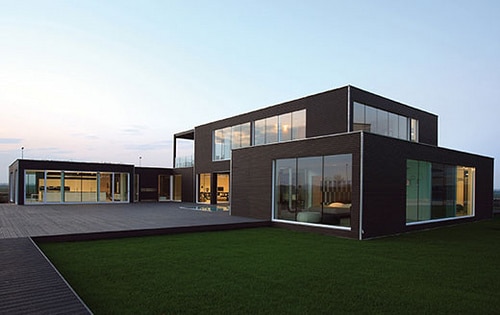
Prefabricated homes or “prefabs” are homes built ahead of time and off site. They’re manufactured in parts (panels or modules) that are shipped and assembled on site. The construction techniques vary greatly, depending on whether you go with panel built or modular, but both of these prefab types are different from manufactured homes (factory-built and shipped as a whole). These days, many prefab houses sport a sleek, modernist design, but there are often custom architecture options if that’s not your thing.
In the U.S., prefabricated homes have been around since the early 1900s but they are making a serious comeback. They were incredibly popular when companies like Aladdin and Sears and Roebuck Co. released kit homes in their catalogs, appealing to thousands of middle-class Americans wanting to build their own homes. They eventually became known as a low-income option but recently, the green building boom has given them a more glamorous name and luxurious design.
What makes them green? Since their pieces are fabricated in a factory with a very specific building process, they create less waste than site-built homes. There’s no guess-and-check here, since builders know exactly how much material they’ll need. Additionally, there are tons of manufacturers who include sustainable components and energy efficiency in their designs, as it’s one of the key reasons for going with a prefab in the first place.
Aside from the environmentally conscious design of many prefabs, you can certainly save some money here, too. Modular Homeowners expects that you can spend 10-20% less if you build modular rather than a traditional stick-built home. This is because there’ll be less wasted materials, more bulk purchasing, and less labor time (prefabs tend to come together much quicker and easier). On top of all that, these types of homes are relatively low-maintenance and have been praised by FEMA for their durability.
Passive House

A Passive House is a home built using rigorous standards for energy efficiency. Passive home building aims to achieve quantifiable energy efficiency as well as comfort, through various design principles such as extreme airtightness, continuous insulation, and high-performance windows and doors. While reducing environmental impact, residents of a Passive House will enjoy excellent indoor air quality and temperature, as well. The Passive House Institute asserts that designing a Passive House is your best bet for becoming Net Zero or Net Positive (meaning your home generates as much or more energy than it needs).
The Passive House or “Passivhaus” standards were created and defined by a German physicist and a Swedish scientist in the 1980s, leading to the first official Passivhaus being built in Germany. Not long after, this concept made its way over to the U.S., where interest has increasingly grown.
Putting your building project up to these aggressive standards might sound difficult, but the sustainability factor is worth it. With an airtight home and innovative heating and cooling techniques, you’ll find yourself using less energy and reducing your carbon load. There’re no wishy-washy results here either – the point of these strict criteria ensures that the energy savings are measurable.
Adopting the Passive House philosophy isn’t just great for the environment; it’s great for you, too! No more drafty, freezing winters or sticky, overheated summers – you’ll be comfortable all year long. No more worrying about how your house will hold up in extreme weather – they’re designed to be incredibly resilient. The innovative ventilation system ensures that you’ll have fresh, clean air, as well. Besides the benefits of a super sealed up, and a strategically ventilated home, you’ll also save a significant amount of money on your energy bill (up to 90%!). Who doesn’t love that?!
Straw Bale
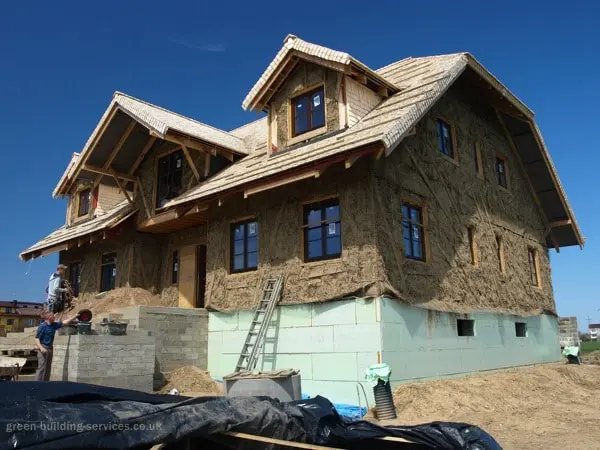
Straw bale homes are built using bales of straw for insulation, or as an actual structural component (or the two combined). Straw bales are stacked on one another to create walls (plus posts and beams, of course) and then covered in plaster. Straw bale houses take on many different looks, but most of them have a bit of a stucco-like, rustic feel to them.
Although building with straw has been an effective method around the world for many centuries, the first straw bale homes in the U.S. trace back to Nebraska in the 1800s when settlers used prairie grass as their material. Straw bale homes were still popular in the first half of the 20th century until mass-produced construction materials took their place. They were eventually reintroduced and have found a place among many Americans seeking an eco-building alternative.
Straw bale homes are more sustainable for many reasons. Straw is a completely natural material, so no harmful chemicals are released (perhaps besides baling equipment emissions). Additionally, turning straw into something useful rather than burning it as waste prevents pollution. Since straw is such a superb insulator, you can also lower your energy usage by up to 75%!
As long as proper construction takes place and the straw is kept totally dry, the advantages to building a straw bale home will be apparent for years. Due to its amazing insulation properties, you’ll be comfortable in all weather and have great soundproofing. Plus, contrary to what many assume, straw also has about three times the burn resistance compared to a traditionally built home. A bit unconventional in many of our minds, maybe, but straw bale homes may be just the solution we need!
Zero Carbon

A zero carbon home is so energy efficient that it’s annual net carbon footprint is zero. These homes are still tied to the grid, but are so insulated, airtight, and low energy, that they’ve become carbon-free. These homes produce enough renewable energy that it balances out any slight energy costs and may even produce more than they use, making it “net positive.” They are also be called “zero energy homes” or “net zero homes” and, have no fear, they look like any other regular home.
Zero carbon homes are a fairly recent notion, based on all of the new “smart” technologies and renewable energies that make it possible. In the last ten years, many countries around the world, including the U.S., joined the Towards Net Zero Energy Solar Buildings research program to study how feasible these homes are on the market. Let’s just say we should all expect to zero carbon homes cropping up more and more!
Zero carbon homes are sustainable for obvious reasons. A home that doesn’t contribute to climate change? Yes, please! As technology and energy conservation/energy harvesting programs grow, these types of homes may not be all that unheard of in the future. Combining the strategies of saving energy while producing renewable energy within the home is an eco-revolution that’ll provide you with a quiet, comfortable home (and save you so much money!).
Earthships
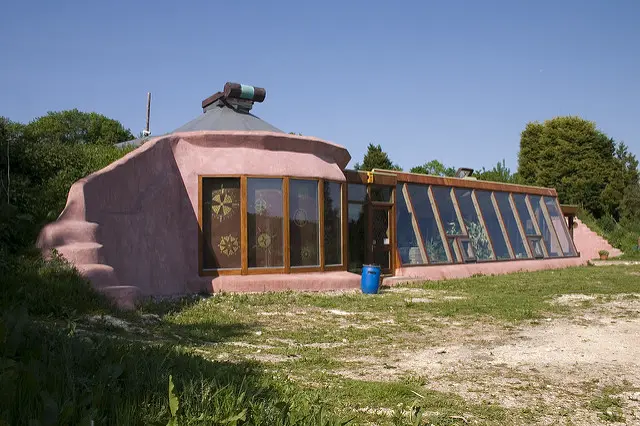
An earthship is a completely self-sustaining, off-the-grid home. They are constructed of both natural and recycled materials (old tires, glass bottles…). These homes are designed to heat and cool themselves naturally, collect solar and wind power, harvest water from rain and snow, contain/treat their own sewage, as well as produce food. With all of these futuristic functions, does the name “earthship” make a little more sense now?
Earthships were founded by architect Michael E. Reynolds, who began experimenting with using recyclables as building materials back in the 1970s. Eventually he began calling his work “Earthship Biotecture” and it evolved into what it is today. His organization teaches others about earthships and how to build them through various trainings and even holds an internship for hands-on learning! Get your earthship experience by renting one for your next vacation.
These sustainable homes aren’t necessarily the green homes you’ll see for sale down the street. They’re still a pretty radical idea but are wonderfully environmental nonetheless. A home that doesn’t rely on external resources but instead produces its own is something that we should take note of. Earthships could be the key to sustainability while giving us a whimsical, self-reliant housing option.
Rammed Earth

This is about as natural as it gets! Rammed earth homes are simple-they’re built from tightly packed soil. A mix of soil (and a little water) gets pressed into plywood forms to create walls, and once a section of wall has been dried or cured, the forms are removed. The outcome is a smoothly layered rock appearance (essentially man-made sedimentary rock), making for a unique yet sophisticated home.
Considering that rammed earth buildings are very literally made from the ground we walk on, it’s no surprise that they’ve been around for thousands of years. The Great Wall of China and the Alhambra Palace in Spain were made using rammed earth techniques, and show its durability and beauty over time. It’s about time we were inspired by famous architecture and applied it to sustainable home building!
Rammed earth homes will pay it forward to both the homeowner and the planet. They are incredibly low-maintenance, strong, fire and pest resistant, breathable, insulating. The aggregate that goes into a rammed earth home can be a very low greenhouse gas emission product, too, depending on how it’s processed and sourced.
Shipping Container

Shipping container homes use steel cargo containers as a structural element. Since all shipping containers are all the same size, they can be stacked or pieced together to create a larger building. Shipping containers have been used for all sort of things: as low income housing, dorms, and even a Starbucks Drive-Thru. They tend to have a modern, industrial look to them, but of course, can be spruced up in numerous ways.
Who started all of this? Well, shipping containers were invented in the 1950s, but it wasn’t until 1987 that they began to have other uses than to carry actual cargo. Phillip C. Clark filed for a U.S. patent that year, for his idea to convert the containers into a “habitable building.” And voila, it’s caught on!
Shipping container homes are eco-friendly because they’re the perfect example of upcycling. Instead of wasting tons of steel from unwanted containers, they can be turned into amazing homes, saving builders from using new materials. These homes are super durable (hello, steel!), require little labor, and can turn out to be quite inexpensive. Container Home Plans can show you how to DIY for under $35,000! So, yeah, we’d say these homes are a pretty impressive, sustainable option.
Photo Attribution:
Tiny House – Photo courtesy: Ben Chun/CC BY 2.0
Prefab – Photo courtesy: jingdianjiaju1/CC BY 2.0
Passive House – Photo courtesy: Tõnu Mauring/CC BY 2.0
Straw Bale House – Photo courtesy: Chris RubberDragon/CC BY 2.0
Zero Carbon – Photo Courtesy: John Livermore
EarthShip – Photo courtesy: Dominic Alves/CC BY 2.0
Rammed Earth – Photo courtesy: Jesse Wagstaff/CC BY 2.0
Shipping Container – Photo courtesy: Angel Schatz/CC BY 2.0




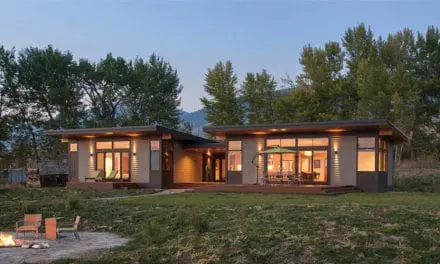
![10 Steps Toward a Zero Energy Home [Infographic]](https://elemental.green/wp-content/uploads/2016/04/cbfb-440x264.jpg)
